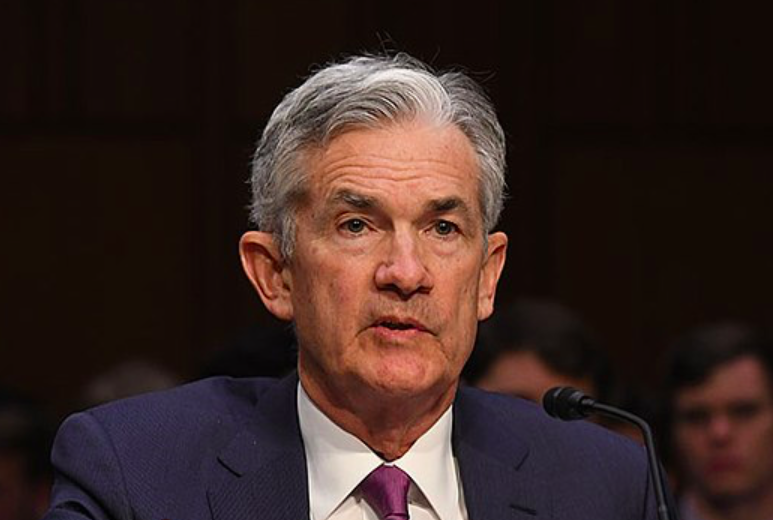
Schroders: 7 Questions on Silicon Valley Bank Failure Impact on Markets & Economy
 Keith Wade, Schroders Chief Economist & Strategist Caproasia.com | The leading source of data, research, information & resource for financial professionals, investment managers, professional investors, family offices & advisors to institutions, billionaires, UHNWs & HNWs. Covering capital markets, investments and private wealth in Asia. How do you invest $3 million to $300 million? How do you manage $20 million to $3 billion of assets? Caproasia - Learn more
Keith Wade, Schroders Chief Economist & Strategist Caproasia.com | The leading source of data, research, information & resource for financial professionals, investment managers, professional investors, family offices & advisors to institutions, billionaires, UHNWs & HNWs. Covering capital markets, investments and private wealth in Asia. How do you invest $3 million to $300 million? How do you manage $20 million to $3 billion of assets? Caproasia - Learn more Caproasia Access | Events | Summits | Register Events | The Financial Centre
The 2023 Investment Day | 2023 Family Office Summits | Family Office Circle
This site is for accredited investors, professional investors, investment managers and financial professionals only. You should have assets around $3 million to $300 million or managing $20 million to $3 billion.




Schroders: 7 Questions on Silicon Valley Bank Failure Impact on Markets & Economy
March 2023 – Schroders has released key insights on United States Silicon Valley Bank failure, and its impact on the global markets & economy. Schroders is one of Europe’s largest independent investment management firms with $932 billion assets under management.
The insights – 7 Questions on Silicon Valley Bank Failure Impact on Markets & Economy, is produced by Emma Stevenson (Schroders Equities Correspondent), with key comments from Andre Reichel (Schroders Global Sector Specialist, Financials), David Knutson (Schroders Head of Fixed Income Product Management), Justin Bisseker (Schroders European Banks Analyst), Yustina Quek (Schroders Asian Financials Credit Analyst), Nils Rode (Chief Investment Officer, Schroders Capital), Tim Creed (Head of Private Equity Investments, Schroders Capital), and Keith Wade (Schroders Chief Economist & Strategist).
 Founded in 1804, Schroders is one of Europe’s largest independent investment management firms by assets under management. As at 30 June 2022, assets under management were £773.4 billion (€898.4 billion; US$939.2 billion). Schroders has continued to deliver strong financial results. It has a market capitalisation of circa £7.7 billion and employs over 5,800 people across 38 locations. Schroders offers innovative products and solutions across their five business areas of solutions; institutional; mutual funds; private assets & alternatives; and wealth management. Clients include insurance companies, pension schemes, sovereign wealth funds, endowments and foundations. They also manage assets for end clients as part of their relationships with distributors, financial advisers and online platforms.
Founded in 1804, Schroders is one of Europe’s largest independent investment management firms by assets under management. As at 30 June 2022, assets under management were £773.4 billion (€898.4 billion; US$939.2 billion). Schroders has continued to deliver strong financial results. It has a market capitalisation of circa £7.7 billion and employs over 5,800 people across 38 locations. Schroders offers innovative products and solutions across their five business areas of solutions; institutional; mutual funds; private assets & alternatives; and wealth management. Clients include insurance companies, pension schemes, sovereign wealth funds, endowments and foundations. They also manage assets for end clients as part of their relationships with distributors, financial advisers and online platforms.
Web links may be disabled on mobile for security.
Please click on desktop.
Quick Links, Ads & Announcements
Caproasia Access | Events | Summits | Register Events | The Financial Centre
The 2023 Investment Day | 2023 Family Office Summits | Family Office Circle
New to Caproasia
Sign Up | Subscribe | Register Events
The 2023 Investment Day | 28/3 HK & 4/4 SG
Private Equity, Hedge Funds, Boutique Funds, Private Markets & more. Taking place on 28th March 2023 in Hong Kong, 4th April 2023 in Singapore.
Visit | Register here




Silicon Valley Bank: what does its failure mean for markets and the economy?
Emma Stevenson, Schroders Equities Correspondent
The collapse of the former favourite of California’s tech start-ups has shaken market confidence. Experts around Schroders give their insights into the market concerns.
Silicon Valley Bank (SVB) failed on Friday 10th March 2023, sending markets into a tailspin and putting the banking sector on edge, with the share prices of regional US banks falling particularly sharply.
1) What happened?
Emma Stevenson: The California-based bank’s client base was skewed towards technology start-ups, who – being flush with funding in 2020 and 2021 – had made significant deposits.
SVB invested a large proportion of these deposits into Treasury notes and other quasi sovereign securities. As the US Federal Reserve (Fed) raised interest rates sharply, the value of these securities fell. At the same time, higher interest rates also caused funding for start-ups to start drying up, and these companies began to withdraw deposits from SVB.
As a relatively small regional bank, SVB was subject to lower capital and liquidity standards than larger systemically important banks. It did not have hedges in place to manage the risk that interest rates could rise.
” To meet client demand for funds, SVB sold $21 billion of securities on 8 March, incurring a $1.8 billion loss. This news spread rapidly and caused other clients to try to withdraw their deposits from SVB, leading to a run on the bank “
To meet client demand for funds, SVB sold US$21 billion of securities on 8 March, incurring a US$1.8 billion loss. This news spread rapidly and caused other clients to try to withdraw their deposits from SVB, leading to a run on the bank.
The US Treasury and Fed announced on 12 March that the Federal Deposit Insurance Corporation would provide emergency funding to protect SVB’s depositors, and those of troubled Signature Bank. In the UK, the Treasury announced the sale of SVB’s UK arm to HSBC for a symbolic £1 (US$1.21).
This swift action by the authorities means that depositors won’t lose out. However, it raises broader questions about the health of the banking sector, the consequences for start-ups, and the likely path of US interest rates.
2) Why was the risk of SVB’s failure not spotted sooner?
 New York City, United States
New York City, United States Emma Stevenson: A law passed in 2018 rolled back regulations on small and midsized US banks. Greater regulatory scrutiny could potentially have headed off some of the risks before it became a crisis. Another contributing factor was the rapid growth of SVB.
Andre Reichel, Schroders Global Sector Specialist, Financials: “There are understandably questions over why SVB’s own management, as well as regulators, didn’t spot the potential risks around the business. One answer is SVB’s rapid growth. Three years ago, SVB was a relatively small bank. Its balance sheet tripled very quickly as a result of the money flowing into the tech and venture capital sectors during the pandemic. But the mindset of management didn’t keep up with the fact that the bank had become a very different, much larger, business in a short space of time.”
” One answer is SVB’s rapid growth. Three years ago, SVB was a relatively small bank. Its balance sheet tripled very quickly as a result of the money flowing into the tech and venture capital sectors during the pandemic “
3) Is the crisis now contained?
 United States
United States Emma Stevenson: Given the lack of regulatory scrutiny of smaller US banks, there are concerns that other banks could yet face similar problems as SVB.
David Knutson, Schroders Head of Fixed Income Product Management: “The question remains whether any other US banks are at risk. Some smaller community banks with concentrated deposit franchises may be vulnerable. We are looking carefully at the impact that quantitative tightening (i.e. the Fed’s unwinding of its bond-buying programme) along with the rapid rise in rates is having on deposit flows through the system. We feel very comfortable with the liquidity at the largest US banks. We continue to monitor the situation, particularly in terms of the availability and demand for credit. The facility put in place by the US authorities has been designed to shore up the banking system, as well as protecting depositors at SVB.”
Andre Reichel, Schroders Global Sector Specialist, Financials: “It’s too soon to say if the crisis is over. Some banks may still be vulnerable but, importantly, a backstop is now in place. Even if another smaller bank fails, the wider system is protected. What we will see is that some of these smaller banks will rearrange their business models to reduce the risk of a similar situation unfolding.”
” It’s too soon to say if the crisis is over “
4) What’s the impact on European and Asian banks?
 Hong Kong | Leading Financial Centre in Asia
Hong Kong | Leading Financial Centre in Asia Emma Stevenson: The news of SVB’s collapse came late on 10 March, missing European trading hours. European bank shares saw sharp falls when markets reopened on 13th March 2023.
Justin Bisseker, Schroders European Banks Analyst: “The share price decline of European banks on Monday – after a tidy resolution to the situation over the weekend – speaks to the degree of nervousness in markets. It’s true that US regulation may need to tighten, which could impact banks’ profits and shareholder returns. However, that’s an issue for US regional and smaller banks, not for Europe. European and UK banks are much more tightly regulated now than they were before the Global Financial Crisis. Any calls for lighter touch UK regulation should now cease, but neither the Bank of England nor the banks themselves were pushing for this anyway. For Asian banks too, the direct impact is minimal given differences in regulation and business models.”
Yustina Quek, Schroders Asian Financials Credit Analyst: “Asian banks are well-regulated and subject to strict liquidity and funding requirements. Asian banks also have fairly traditional business models where the loan book is much larger than the investment book, some of which had already been reflected in their capital. As a result, higher net interest income from the higher interest rate environment could more than absorb mark-to-market losses on the investment book. Also, the loan books of Asian banks tend to be well-diversified. The dynamic of tech start-ups or venture capital players drawing down deposits is not relevant for these banks as they don’t tend to serve this clientele.”
” Asian banks are well-regulated and subject to strict liquidity and funding requirements “
5) Should investors pay more attention to concentration of deposits?
Emma Stevenson: While SVB itself was only the 16th largest bank in the US, it was the most important lender for tech start-ups.
Nils Rode, Chief Investment Officer, Schroders Capital: “This bank was too big to fail for Silicon Valley and for the US venture capital industry, even though it was a smaller bank in overall terms. The exposure of the industry to this one bank was extremely high, with more than 50% of start-ups banking with them. That’s an issue that clearly wasn’t on many people’s radars, but it will be now.”
Emma Stevenson: Start-up and early stage companies in the tech sector are an important future growth driver for the US economy. If these firms had been unable to access their deposits, they risked going bust.
Nils Rode: “If we hadn’t seen such a quick resolution to the situation then there was a risk that very soon there would have been a potentially high number start-ups closing down and being written off. Many employees would have lost their jobs. And such a scenario would have impacted valuations and fundraising too.”
Emma Stevenson: The swift action of the authorities was also good news for SVB’s UK clients.
Justin Bisseker, Schroders European Banks Analyst: “From the point of view of HSBC, its acquisition of the UK arm of SVB is so small in balance sheet terms as to be immaterial. However, it’s an absolutely crucial deal for SVB’s UK tech client base.”
” While SVB itself was only the 16th largest bank in the US, it was the most important lender for tech start-ups “
6) Where will start-ups deposit their money now?
 Stripe
Stripe Emma Stevenson: The reason so many start-ups banked with SVB was because it gave them access to a wider range of business services than many larger banks would typically allow to such small companies. There is a question mark over what start-ups will do with their deposits now. There are signs that some fintechs (financial technology firms) saw a pick-up in volumes recently as a result of the turmoil at SVB.
Tim Creed, Head of Private Equity Investments, Schroders Capital: “It has been widely reported that a number of companies transferred capital from SVB to digitally enabled fintechs like Revolut during last week’s uncertainty. The speed of the transfers demonstrates how efficient tech enabled companies with great user interfaces are at opening new accounts, as they are able to operate 24/7”.
Emma Stevenson: Looking ahead though, start-ups may now prefer to seek out the security offered by traditional lenders.
Justin Bisseker, Schroders European Banks Analyst: “SVB’s failure may well mean that depositors prioritise safety over other factors when choosing a bank. This would tend to be an advantage for the larger lenders. And at the same time, reduced competition for deposits could mean that banks feel less obliged to pass on rising base rates in full to their deposit holders, benefiting the banks’ profitability.”
Emma Stevenson: Fintechs, cryptocurrencies and other forms of decentralised finance could be longer-term beneficiaries if SVB’s failure sparks further financial innovation.
Nils Rode, Chief Investment Officer, Schroders Capital: “Thousands of people in Silicon Valley suffered through a very nervous weekend. At least some of them will be motivated to think even harder about how to replace traditional banks with fintech alternatives.”
” SVB’s failure may well mean that depositors prioritise safety over other factors when choosing a bank. This would tend to be an advantage for the larger lenders “
7) Has the SVB episode changed the outlook for interest rates?
 United States Federal Reserve (Fed) Chairman Jerome Powell
United States Federal Reserve (Fed) Chairman Jerome Powell Emma Stevenson: The collapse of SVB demonstrates how sharply rising interest rates are uncovering weaknesses that were previously hidden by the low rate environment.
Keith Wade, Schroders Chief Economist and Strategist: “The Fed will be keen not to make the current situation worse, and could therefore pull back from significant tightening. However, the difference between now and the Global Financial Crisis is that inflation is a problem now. That constrains what the Fed can do, given that bringing inflation back to target has to be the key focus.”
” The Fed will be keen not to make the current situation worse, and could therefore pull back from significant tightening “
This article is produced by Schroders on United States Silicon Valley Bank failure, and its impact on the global markets & economy. This article – 7 Questions on Silicon Valley Bank Failure Impact on Markets & Economy, is produced by Emma Stevenson (Schroders Equities Correspondent), with key comments from Andre Reichel (Schroders Global Sector Specialist, Financials), David Knutson (Schroders Head of Fixed Income Product Management), Justin Bisseker (Schroders European Banks Analyst), Yustina Quek (Schroders Asian Financials Credit Analyst), Nils Rode (Chief Investment Officer, Schroders Capital), Tim Creed (Head of Private Equity Investments, Schroders Capital), and Keith Wade (Schroders Chief Economist & Strategist).
Important Information
This document is intended to be for information purposes only and it is not intended as promotional material in any respect nor is it to be construed as any solicitation and offering to buy or sell any investment products. The views and opinions contained herein are those of the author(s), and do not necessarily represent views expressed or reflected in other Schroders communications, strategies or funds. The material is not intended to provide, and should not be relied on for investment advice or recommendation. Any security(ies) mentioned above is for illustrative purpose only, not a recommendation to invest or divest. Opinions stated are valid as of the date of this document and are subject to change without notice. Information herein and information from third party are believed to be reliable, but Schroder Investment Management (Hong Kong) Limited does not warrant its completeness or accuracy.
Investment involves risks. Past performance and any forecasts are not necessarily a guide to future or likely performance. You should remember that the value of investments can go down as well as up and is not guaranteed. You may not get back the full amount invested. Derivatives carry a high degree of risk. Exchange rate changes may cause the value of the overseas investments to rise or fall. If investment returns are not denominated in HKD/USD, US/HK dollar-based investors are exposed to exchange rate fluctuations. Please refer to the relevant offering document including the risk factors for further details.
This material has not been reviewed by the SFC. Issued by Schroder Investment Management (Hong Kong) Limited. Schroder Investment Management (Hong Kong) Limited Level 33, Two Pacific Place, 88 Queensway, Hong Kong www.schroders.com.hk
About Schroders

As a global active asset manager, the way we direct capital not only shapes the financial returns we achieve for our clients but also the impact that the companies in which we invest on their behalf might have on society. The relationship between these two outcomes has rapidly evolved as we see a fundamental shift in how companies are viewed and valued. Understanding the impact that they can have on society and the planet is crucial in assessing their ability to deliver risk-adjusted profits.
Our ongoing success is built on a history of experience and expertise, whereby we partner with our clients to construct innovative products and solutions across our five business areas consisting of Private Assets & Alternatives, Solutions, Mutual Funds, Institutional and Wealth Management and invest in a wide range of assets and geographies. By combining our commitment to active management and focus on sustainability, our strategic capabilities are designed to deliver positive outcomes for our clients. We are responsible for £574.4 billion (€641.7 billion/$785.1 billion 31/12/20) assets of our clients, managed locally by 42 investment teams worldwide. As a global business with over 5,500 talented staff across 35 locations, we are able to stay close to our clients and understand their needs. We have over 200 years of experience in investment and innovation. Visit: www.schroders.com.hk
Managing $20 million to $3 billion. Investing $3 million to $300 million.
For Investment Managers, Hedge Funds, Boutique Funds, Private Equity, Venture Capital, Professional Investors, Family Offices, Private Bankers & Advisors, sign up today. Subscribe to Caproasia and receive the latest news, data, insights & reports, events & programs daily at 2 pm.
Join Events & Find Services
Join Investments, Private Wealth, Family Office events in Hong Kong, Singapore, Asia-wide. Find hard-to-find $3 million to $300 million financial & investment services at The Financial Centre | TFC. Find financial, investment, private wealth, family office, real estate, luxury investments, citizenship, law firms & more. List hard-to-find financial & private wealth services.
Have a product launch? Promote a product or service? List your service at The Financial Centre | TFC. Join interviews & editorial and be featured on Caproasia.com or join Investments, Private Wealth, Family Office events. Contact us at angel@caproasia.com or mail@caproasia.com
Caproasia.com | The leading source of data, research, information & resource for financial professionals, investment managers, professional investors, family offices & advisors to institutions, billionaires, UHNWs & HNWs. Covering capital markets, investments and private wealth in Asia. How do you invest $3 million to $300 million? How do you manage $20 million to $3 billion of assets?
Quick Links Caproasia Access | Events | Summits | Register Events | The Financial Centre
The 2023 Investment Day | 2023 Family Office Summits | Family Office Circle
2021 Data Release
2020 List of Private Banks in Hong Kong
2020 List of Private Banks in Singapore
2020 Top 10 Largest Family Office
2020 Top 10 Largest Multi-Family Offices
2020 Report: Hong Kong Private Banks & Asset Mgmt - $4.49 Trillion
2020 Report: Singapore Asset Mgmt - $3.48 Trillion AUM
For Investors | Professionals | Executives
Latest data, reports, insights, news, events & programs
Everyday at 2 pm
Direct to your inbox
Save 2 to 8 hours per week. Organised for success
Register Below
For CEOs, Heads, Senior Management, Market Heads, Desk Heads, Financial Professionals, Investment Managers, Asset Managers, Fund Managers, Hedge Funds, Boutique Funds, Analysts, Advisors, Wealth Managers, Private Bankers, Family Offices, Investment Bankers, Private Equity, Institutional Investors, Professional Investors
Get Ahead in 60 Seconds. Join 10,000 +
Save 2 to 8 hours weekly. Organised for Success.
Sign Up / Register
You are:
InvestorProfessionalFamily OfficeExecutive
Select:
TrialSubscriptionMembershipEvents
Interests / Events / Summits / Roundtables / Networking:
Professional InvestorPrivate WealthFamily OfficePrivate BankingWealth ManagementInvestmentsAlternativesPrivate MarketsCapital MarketsESG & SICEO & EntrepreneursTax, Legal & RisksHNW & UHNWs Insights
Your Name*
Company*
Job Title*
Email 1 (Work / Personal)*
Email 2 (Work / Personal)
Country
Web links may be disabled on mobile for security.
Please click on desktop.



New to Caproasia
Learn More | Sign Up | Subscribe | Register Events
Caproasia Users
- Manage $20 million to $3 billion of assets
- Invest $3 million to $300 million
- Advise institutions, billionaires, UHNWs & HNWs
- Caproasia.com
- Caproasia Access
- Caproasia Events
- The Financial Centre | Find Services
- Membership
- Family Office Circle
- Professional Investor Circle
- Investor Relations Network
- Professional Investor
- Family Office
- HNW Partnership
- Family Office Circle
- Family Office Networking
- Family Office Roundtable
- The Family Office Summit
- 28th March 2023 - Hong Kong
- 4th April 2023 - Singapore
- April 2023 - Virtual
- Sept 2023 - Hong Kong
- Oct 2023 - Singapore
- Oct 2023 - Hong Kong
- Visit: The Investment Day | Register: Click here
- The Investment Summit
- The Private Wealth Summit
- The Family Office Summit
- The CEO & Entrepreneur Summit
- The Capital Markets Summit
- The ESG / Sustainable Investment Summit
mail@caproasia.com, angel@caproasia.com
For Listing, Subscription
mail@caproasia.com, claire@caproasia.com
For Press Release, send to:
press@caproasia.com
For Events & Webinars
events@caproasia.com
For Media Kit, Advertising, Sponsorships, Partnerships
angel@caproasia.com
For Research, Data, Surveys, Reports
research@caproasia.com
For General Enquiries
mail@caproasia.com
AP by OMG
Asian-Promotions.com |
Buy More, Pay Less | Anywhere in Asia
Shop Smarter on AP Today | FREE Product Samples, Latest
Discounts, Deals, Coupon Codes & Promotions | Direct Brand Updates every
second | Every Shopper’s Dream!
Asian-Promotions.com or AP lets you buy more and pay less anywhere in Asia. Shop Smarter on AP Today. Sign-up for FREE Product Samples, Latest Discounts, Deals, Coupon Codes & Promotions. With Direct Brand Updates every second, AP is Every Shopper’s Dream come true! Stretch your dollar now with AP. Start saving today!